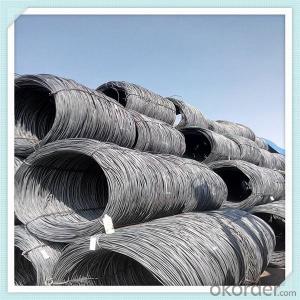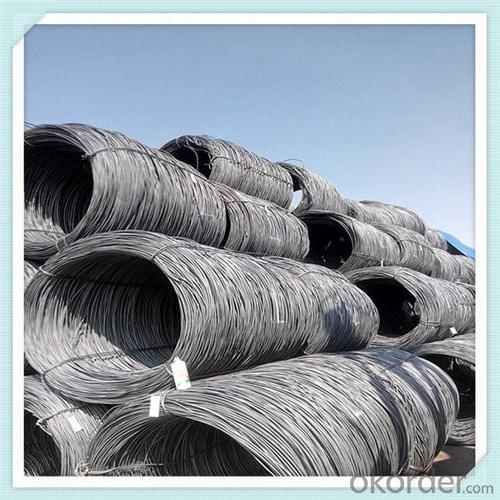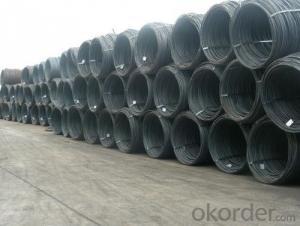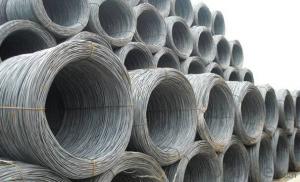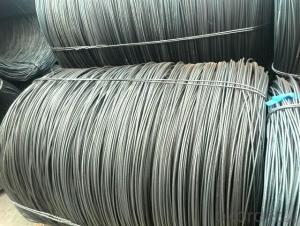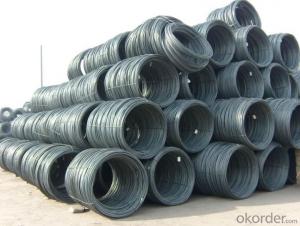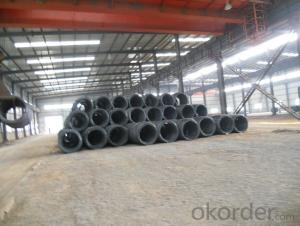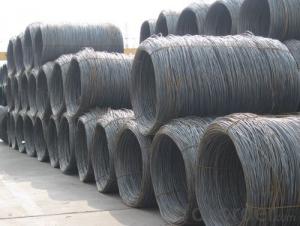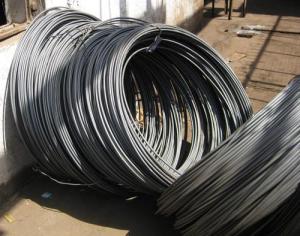Prime SAE1008B steel wire rod low carbon
- Loading Port:
- Guangzhou
- Payment Terms:
- TT OR LC
- Min Order Qty:
- 100 m.t.
- Supply Capability:
- 11732 m.t./month
OKorder Service Pledge
OKorder Financial Service
You Might Also Like
Specification
Wire rod is a rolled alloy or nonalloy steel product, produced from a semi (e.g. bloom) and having a round,
rectangular or other cross-section. Particularly fine cross-sections may be achieved by subsequent cold
forming (drawing). Wire rod is wound into coils and transported in this form
Our Advantage:
High quality steel products from 1 class mills in
Reasonable price
Professionalism of the products
On-time delivery
Complete documents and certificates
Sincere service to meet our clients' requirements
Features
1、Pure steel quality, stable chemical contents, small tolerance.
2、Constant Quality, good drawing performance.
3、High dimension accuracy degree, accuracy degree of Level C up to 80%, smooth surface, less scale,
easy to be pickled.
4、Automatic bundling with 4 lines by Machine in tidy and good looks
5、Big high quality percentage, small coil percentage, and heavy coil weight for Hard Coil.
6、High sorbitizing percentage.
Product Description :
Standard | AISI, ASTM, BS, DIN, GB, JIS |
Material/steel grade | Q195-Q235,SAE1006B,SAE1006CR, SAE1008B, SAE1008CR, SAE1010B, SAE1018B, or according to customers requirements |
Wire Gauge | 5.5-12mm |
Coil weight | 1.8-2.1mts |
MOQ | 25MT |
Delivery Time | 15-30 days after receipt of L/C or deposit by T/T |
Packing | In coil and load in container, if large quantity, by bulk vessel; Can be packed as customers' special requirements |
Payment terms | 1).100% irrevocable L/C at sight. 2).30% T/T prepaid and the balance against the copy of B/L. 3).30% T/T prepaid and the balance against L/C |
Application | widely used in machinery parts, manufacturing industry, electronics industry, metal tools and others |
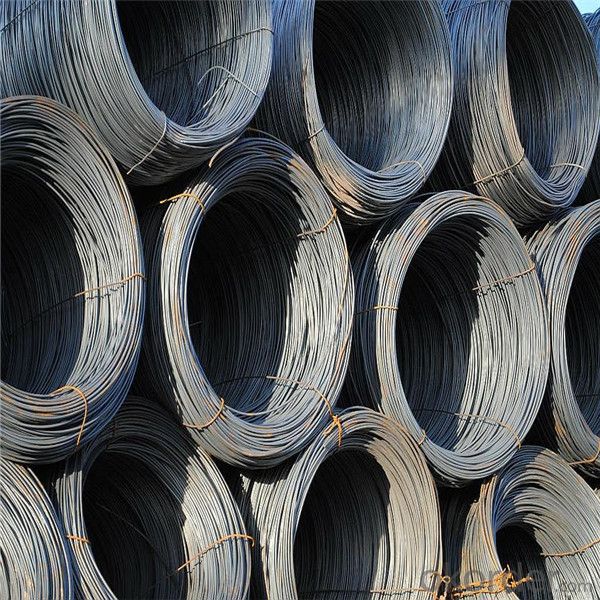
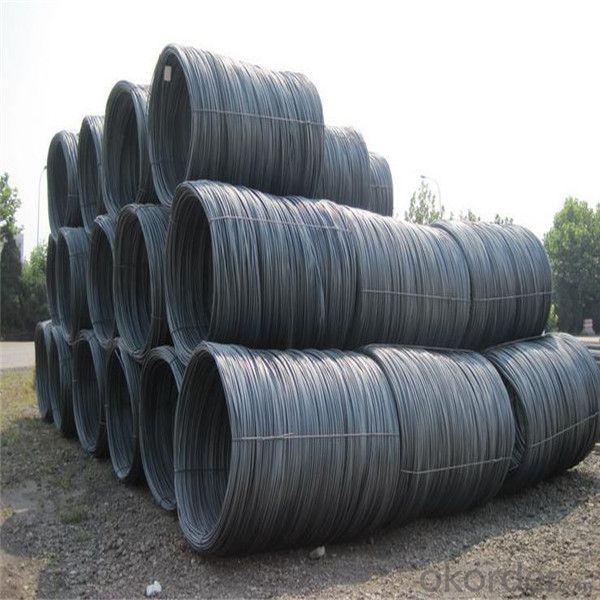
Application :
It generally used in braiding the hose for bathing product and machinery. With it
good flexibility, resistant to high temperature and resistant to corrosion, it
used widely in many industries.
Packing :
Hot-rolled wire rod is held in a unit with at least four steel straps in the
transverse direction and transported and stored without further packaging.
Before
the steel strapping is applied, the wire rod must be sufficiently compressed.
The strapping is fixed in the transverse direction with a single circumferential
strap so that the strapping does not slip and cause the coil to come apart.
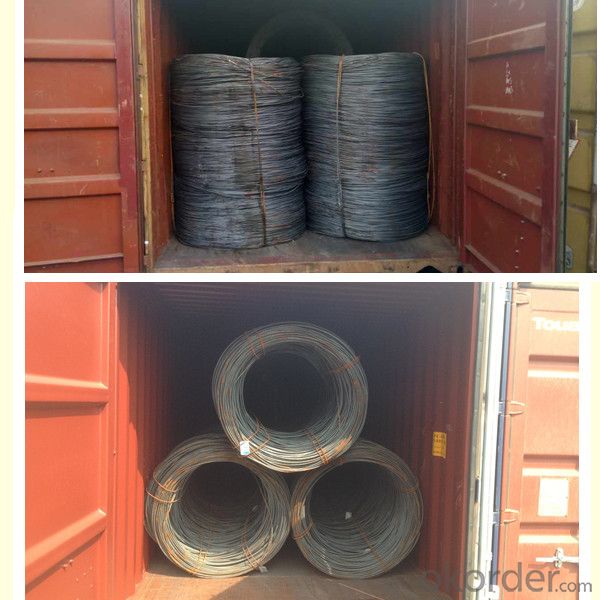
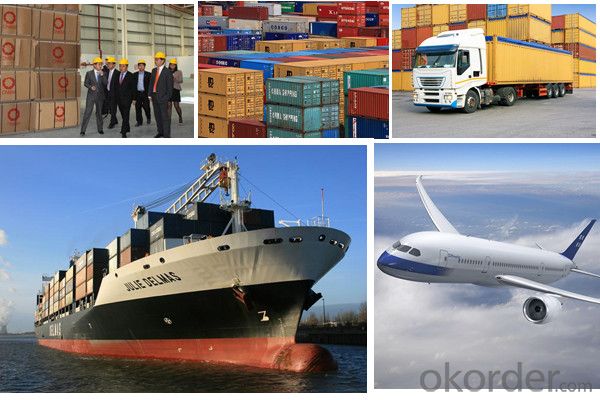
Our service:
(1) We cooperate with famous factories with advanced equipment and well trained workers.
(2) We can provide factory price with trading company service.
(3) We continuously work on the improvement of our processes, guaranteeing
consistently high standards of quality to keep none compensation.
(4) We guarantee 24 hours response and 48 hours solution providing service.
(5) We accept small order quantity before formal cooperation.
(6) We deliver the agreed quality at the agreed time, reacting to changes in
customer wishes in a flexible way.
(7) Due to our volume and selling power, we have excellent freight rates with
shipping lines.
(8) We strive to always be fair and honest in our dealings with customers.
(9) We strive to work together with customers to achieve much more than we can
achieve alone.
(10) Through our passion and commitment we aim to be a market leader in all our
key markets. To maintain our position as market leader we must continue to add
value in all that we do.
FAQ:
1.Q: What's your MOQ(minimum order quantity)?
A: One full container, mixed acceptable .
2. Q: What's your packing methods?
A: Packed in bundle or bulk ..
3. Q: How can I buy CNBM products in my country?
A:Please send us an inquiry or email ,we will reply to you if there is distributor in your country
4. Q: Can we visit your factory?
A: Warmly welcome. Once we have your schedule, we will arrange the
professional sales team to follow up your case.
5. Q: How long does it take to get the product if i place an order?
A:With the process of your requirements,we will pack and deliver in 3
-7 days. If it is by sea shipment,it will take 15-45 days depending on different locations
- Q: How is steel wire rod used in the manufacturing of wire forms for electrical connectors?
- Steel wire rod is an essential component in the manufacturing of wire forms for electrical connectors. The wire rod serves as the raw material that is transformed into various wire forms, such as pins, sockets, and terminals, which are crucial components of electrical connectors. The manufacturing process begins with the selection of high-quality steel wire rod, which is typically made of carbon steel or stainless steel. The wire rod is carefully chosen based on its specific properties, such as strength, flexibility, and conductivity, to ensure that the resulting wire forms meet the required standards and specifications. Once the appropriate wire rod is selected, it undergoes a series of manufacturing operations. The first step is to draw the wire rod through a series of dies and reduce its diameter to the desired size. This process is known as wire drawing and is performed to achieve the required thickness and smoothness of the wire form. After wire drawing, the wire rod is then straightened and cut into specific lengths. These lengths are determined based on the design and dimensions of the wire forms required for the electrical connectors. The straightening and cutting process ensures that the wire forms are uniform and consistent in size. The next step involves bending and shaping the wire rod into the desired form. This is typically achieved through the use of specialized machines and tools that can bend the wire rod into various configurations, such as loops, hooks, or specific geometrical shapes. These wire forms are designed to fit and connect with other components of the electrical connectors. Once the wire forms are shaped, they undergo additional processes such as heat treatment or plating to enhance their mechanical properties or improve their resistance to corrosion. These treatments ensure that the wire forms can withstand the demanding conditions and provide reliable connectivity in electrical applications. In conclusion, steel wire rod plays a critical role in the manufacturing of wire forms for electrical connectors. Through a series of manufacturing processes, the wire rod is transformed into various wire forms that are essential components of electrical connectors. These wire forms provide reliable connectivity and ensure the proper functioning of electrical systems.
- Q: What are the different types of coatings used on steel wire rod?
- There are several different types of coatings that can be used on steel wire rods. Some common examples include zinc coatings, which provide corrosion resistance; copper coatings, which enhance conductivity; and polymer coatings, which offer protection against abrasion and wear. Other types of coatings may include aluminum, tin, or nickel, depending on the specific application and desired properties.
- Q: How are steel wire rods used in the manufacturing of strings for musical instruments?
- Steel wire rods are used in the manufacturing of strings for musical instruments because of their high tensile strength and durability. These rods are first drawn into thin wires, which are then wound tightly together to form the core of the string. The core is then further wrapped with materials such as nickel, silver, or bronze to enhance the tone and playability of the string. The use of steel wire rods ensures that the strings have the necessary strength and flexibility to produce clear and resonant sound when played on musical instruments.
- Q: How is steel wire rod used in the manufacturing of wire rope connectors?
- Steel wire rod is used in the manufacturing of wire rope connectors as it is the primary material used to form the wire rope itself. The steel wire rod is drawn through a series of dies to reduce its diameter and increase its strength. These thin strands of steel wire are then twisted and braided together to form the wire rope. The wire rope connectors are then attached to the ends of the wire rope to provide a secure connection point.
- Q: How is steel wire rod tested for quality assurance?
- Steel wire rod is tested for quality assurance through a series of rigorous tests and inspections. These include chemical composition analysis, tensile strength and elongation tests, surface quality assessment, and dimensional measurements. Additionally, non-destructive testing methods like ultrasonic or magnetic particle inspection may be employed to identify any internal defects. These comprehensive testing procedures ensure that steel wire rod meets the required quality standards before it is used in various applications.
- Q: How are steel wire rods used in the manufacturing of wire brushes for cleaning purposes?
- Steel wire rods are used in the manufacturing of wire brushes for cleaning purposes as they serve as the core material for the bristles of the brush. The rods are typically cut and shaped into various lengths and gauges, and then attached to a handle or base to create a brush. The steel wire bristles are strong and durable, allowing the brush to effectively remove dirt, rust, and debris from surfaces.
- Q: What are the major steel wire rod producing countries?
- Some of the major steel wire rod producing countries include China, Japan, India, the United States, and Russia.
- Q: What are the common testing methods for steel wire rod?
- Common testing methods for steel wire rod include tensile testing, hardness testing, ultrasonic testing, and dimensional testing.
- Q: What are the different types of steel wire rod surface defect detection and analysis tools?
- There are various types of steel wire rod surface defect detection and analysis tools available in the market. Some commonly used tools include visual inspection tools, such as magnifying glasses or microscopes, which can help identify surface defects like scratches, cracks, or pitting. Additionally, non-destructive testing methods like ultrasonic testing, eddy current testing, or magnetic particle inspection are employed to detect internal or surface defects in the wire rod. These tools use sound waves, electrical currents, or magnetic fields to identify and analyze defects. Advanced technologies like computer vision systems or laser scanning can also be used for automated defect detection and analysis, providing accurate and efficient results.
- Q: What are the different measurement techniques used for steel wire rod?
- To ensure the quality, accuracy, and compliance of steel wire rod, several measurement techniques are utilized. These techniques encompass: 1. Accurate Diameter Measurement: Specialized instruments like gauges or micrometers are employed to precisely measure the diameter of the steel wire rod. This ensures that the wire rod meets the required diameter specifications. 2. Testing Tensile Strength: Tensile strength is a crucial property of steel wire rod that determines its ability to withstand pulling forces without breaking. By subjecting a sample of the wire rod to controlled tension until it fractures, the force required to break it is measured. This test helps determine the wire rod's strength and its adherence to specified standards. 3. Assessing Hardness: Hardness is another significant property that affects the usability of steel wire rod in different applications. Various hardness testing methods, such as Rockwell or Brinell tests, are employed to measure the wire rod's resistance to indentation or deformation. These tests help assess the wire rod's hardness level and its suitability for specific purposes. 4. Thorough Surface Inspection: The surface quality of steel wire rod is critical, as any defects or irregularities can impact its performance and durability. Visual inspection, along with techniques like magnetic particle inspection or ultrasonic testing, is employed to identify surface defects such as cracks, scratches, or discontinuities in the wire rod. 5. Analyzing Chemical Composition: Steel wire rod is composed of different grades of steel, each with specific chemical compositions. Analyzing the chemical composition of the wire rod is essential to ensure it meets the required standards and is suitable for the intended application. Techniques such as spectroscopy or chemical analysis are used to determine the precise composition of the wire rod. 6. Precise Dimensional Measurement: In addition to diameter measurement, other dimensions of the steel wire rod, including length, straightness, or surface profile, must be accurately measured. This is achieved using specialized measuring tools such as calipers, rulers, or laser-based systems to ensure the wire rod's dimensions meet the specified tolerances. By employing these measurement techniques, manufacturers guarantee the quality, strength, hardness, and dimensional accuracy of steel wire rod, meeting the specific requirements of various industries and applications.
Send your message to us
Prime SAE1008B steel wire rod low carbon
- Loading Port:
- Guangzhou
- Payment Terms:
- TT OR LC
- Min Order Qty:
- 100 m.t.
- Supply Capability:
- 11732 m.t./month
OKorder Service Pledge
OKorder Financial Service
Similar products
Hot products
Hot Searches
Related keywords
